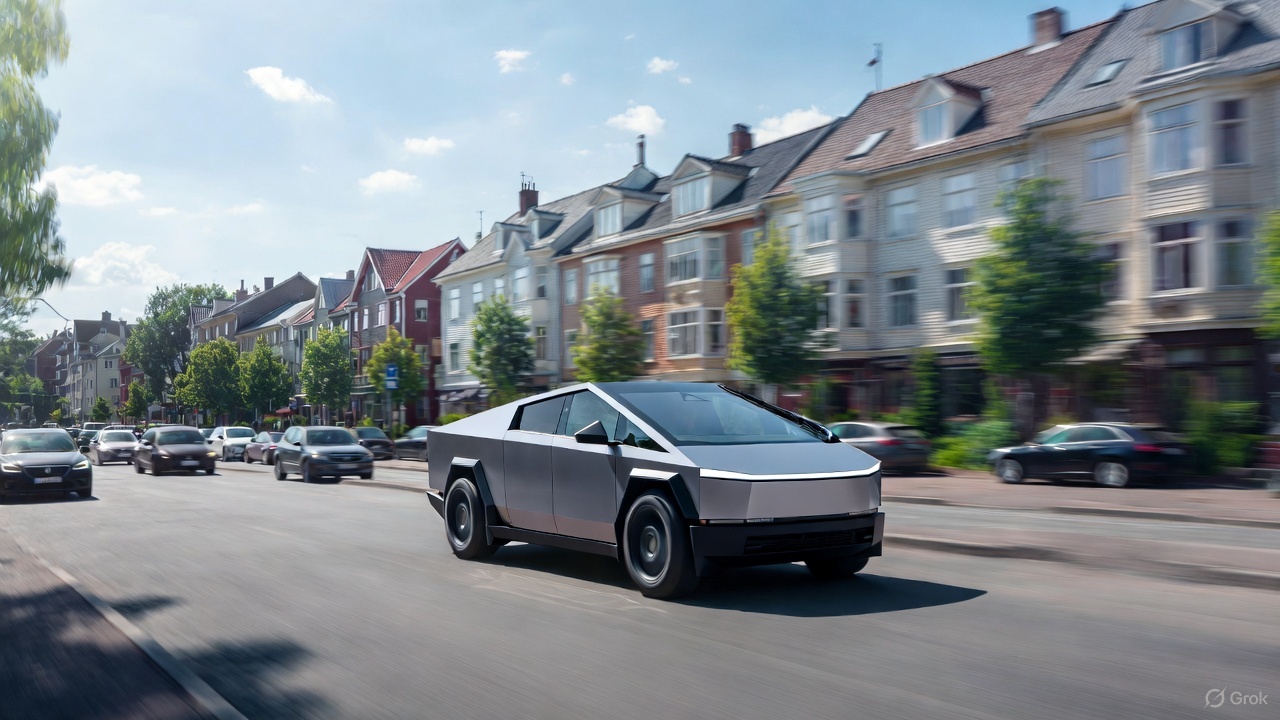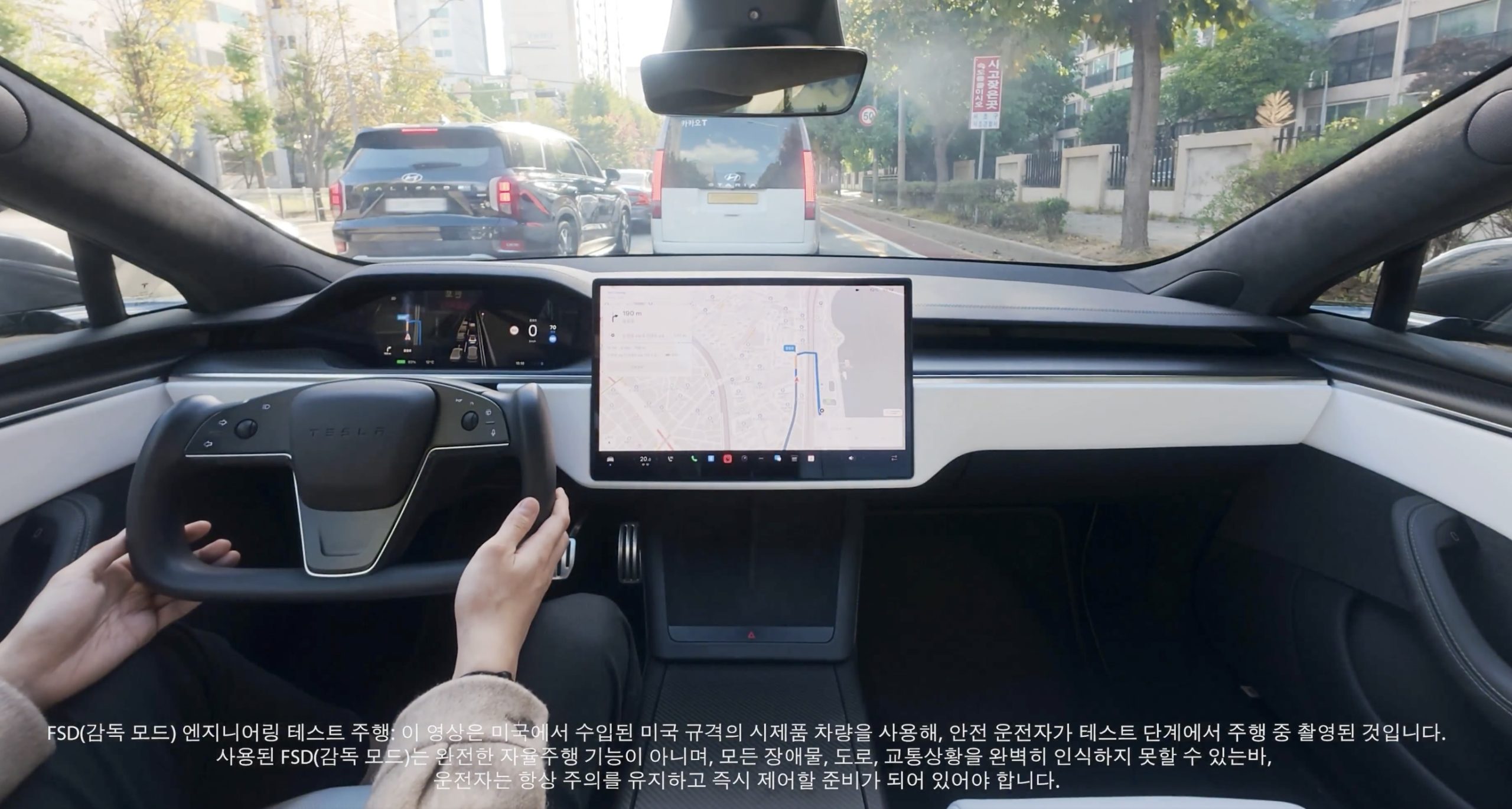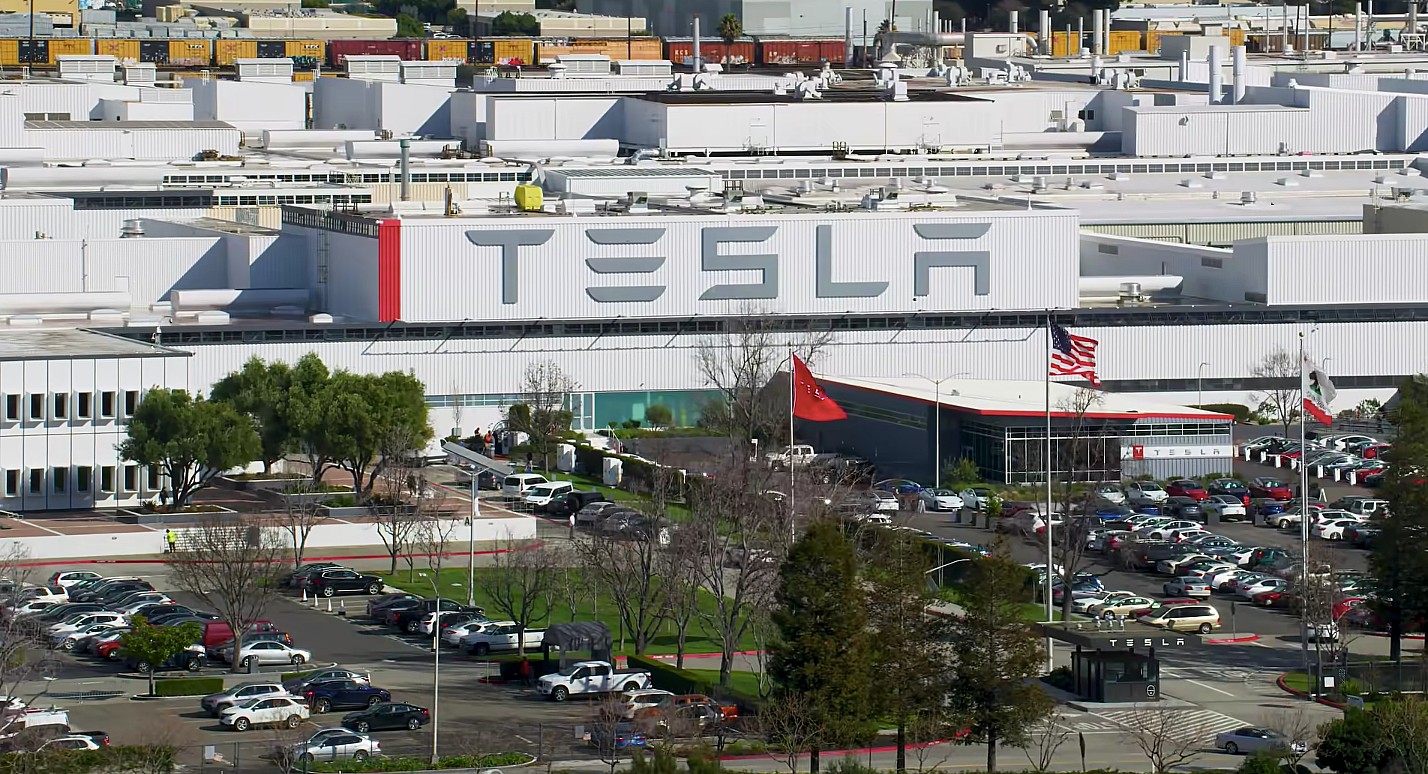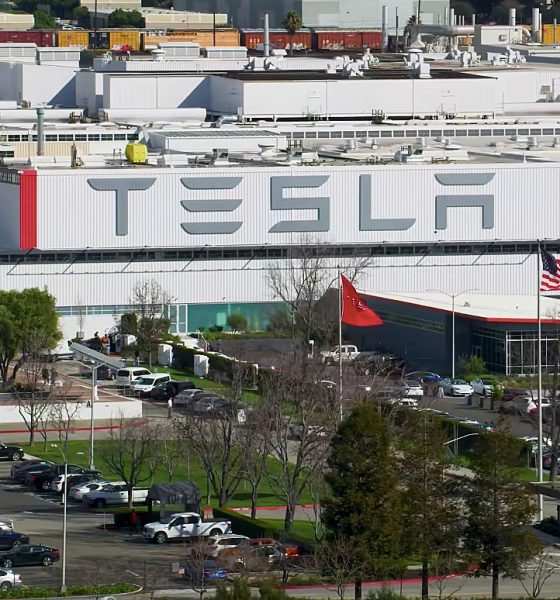Tesla’s Battery Day is coming tomorrow after the electric car maker’s 2020 Annual Shareholder Meeting. During the event, Tesla is expected to discuss the details of its next-generation battery cells, as well as their role in the world’s acceleration in sustainable energy. Actual details about Battery Day have been pretty scarce save for a few potential leaks, but that has not stopped the Tesla community from speculating about what the highly-anticipated event would involve.
A concise summary of the current expectations for Battery Day was recently shared by Tesla Daily’s Rob Maurer, who compiled a list of topics that the electric car maker could cover during the event. Following then is a list of expectations about what Tesla could discuss tomorrow, as the company finally shows the world what it has been working on with regards to its battery technology.
A New Cell Design
Tesla has been teasing that it would be going into the production of battery cells. So far, leaks suggest that the company is about to adopt a larger form factor for its batteries, similar to how Tesla introduced the 2170 cells for the Model 3, which were larger than the 18650 cells used in the Model S and Model X. Leaks have pointed to Tesla’s new cells possibly adopting a 54×98 form factor, which has about 10x the volume of a 2170 cell.
With larger form factors, the electrons and the ions travel larger distances as they move around in the cell, generating more friction and heat. This is a huge downside to larger cells, but Tesla’s tabless battery patent may hold the key to solving this issue. With a tabless battery cell design, the distance traveled by electrons and ions is largely reduced, limiting the disadvantages inherent among large cells. Such a design has several advantages, including better energy density and a more efficient manufacturing process.
Battery Chemistry
Speculations are abounding that Tesla may discuss the amount of silicon that it is using in the anode of its next-generation cells. The more silicon that is used, the better the energy density. However, the utilization of silicon usually results in cracked anodes over time, reducing battery performance and life. Introducing more silicon into the anode is something that battery researchers have been attempting to accomplish for a while now, so it would be quite interesting if the electric car maker would announce some headway into its silicon use as well.
Tesla may also discuss Maxwell’s technology and how it is being used for the company’s electric cars and energy storage devices. Maxwell has developed numerous innovations prior to its acquisition by Tesla, though the most relevant part of the company’s work in relation to the electric car maker is arguably its dry battery electrode tech. Considering that traditional lithium-ion batteries produce their electrodes in a wet slurry format (a rather lengthy process), dry electrode technology could vastly improve not only the energy density of Tesla’s cells, they could improve the production output of the batteries themselves as well.
Cell-to-Pack Innovations
Tesla’s battery packs today feature cells that are packed into modules that are then packed into a battery pack. Back in the days of the original Roadster, battery modules were used as a means for the company to take out parts of the battery that may need to be replaced without taking out the entire pack. That was 12 years ago, however, and much has happened since then. Tesla has transitioned from a budding niche electric car maker to the manufacturer of the market’s best-selling EVs.
As Elon Musk noted in the past, battery modules today are pretty much just an extra step, taking up weight without really serving a legitimate purpose. Musk then stated that the future is cell to pack without modules, suggesting that the company’s next-generation batteries will be using a cell-to-pack design. Such an innovation gives numerous benefits to Tesla, from lower production costs to possibly even better energy density.
Battery Manufacturing and the Roadrunner Line
Elon Musk has always been pretty transparent about Tesla’s mission, which is to accelerate the advent of sustainable energy. Having enough batteries to enable such a transition is key to this goal. With this in mind, the potential innovations that Tesla will be discussing in Battery Day — a larger form factor that would allow the company to produce fewer cells to get the same amount of energy; a tabless cell design that could make production easier; dry electrode tech that could greatly increase the production capacity density of each battery; and a cell-to-pack design that should allow the production of batteries with less equipment at less cost — could ultimately pave the way for electric vehicles and energy storage products that are significantly better than the industry standard today.
The Roadrunner project in Fremont is expected to be a central component of Tesla’s battery manufacturing plans, with attendees to the event being shown just how fast the company could produce its battery cells using its in-house production process. Elon Musk seems to be hyping the Roadrunner line recently on Twitter as well, when he made references to a game called “Factorio,” which happens to be a title focused on growing and maintaining advanced, efficient factories.
The Million-Mile Battery
The million-mile battery has been heavily speculated for Battery Day. Tesla’s electric cars are already capable of lasting long despite heavy use, but with batteries and powertrains that could last a million miles, the company could create a generation of vehicles that are designed to be always operational for an extended period of time. Million-mile batteries are then crucial for Tesla’s plans to roll out a Robotaxi service, which involves vehicles traveling long distances every year.
The Plaid Powertrain
With Tesla’s battery innovations in mind, speculations are high that the company would unveil its first vehicles that would carry its next-generation cells on Battery Day. Among Tesla’s ongoing projects, the Roadrunner cells seem to be a perfect match for cars like the Plaid Model S, Plaid Model X, and next-generation Roadster. All three vehicles have been confirmed by Elon Musk to feature the company’s upcoming “Plaid Powertrain,” which is something that has been heavily teased for some time now. Interestingly enough, updates on Tesla’s Plaid vehicles have been pretty scarce lately, making an announcement on Battery Day somewhat likely.
Watch Rob Maurer’s full Tesla Battery Day predictions in the video below.

News
Tesla on track to break Volkswagen’s historic record in Norway: report
As per Elbil Statistik, Tesla reached 26,127 Norwegian sales so far this year, without counting 13 imported Cybertrucks.

Tesla is surging towards a historic milestone in Norway this month, putting the company on track to break Volkswagen’s long-standing annual sales record in the country.
With 3,732 units sold in November alone and more than 26,000 delivered year-to-date, Tesla is poised to become one of the most successful car brands in Norway’s modern automotive history.
Tesla closes in on Norway’s all-time sales record
Norway’s demand for Tesla vehicles has intensified as drivers attempt to beat the incoming VAT changes on electric cars. Once the VAT changes take effect, the best-selling Model Y could become 50,000 kroner more expensive, as noted in a CarUp report. This has likely caused a rise in sales for Tesla in the country as of late.
As per Elbil Statistik, Tesla reached 26,127 Norwegian sales so far this year, without counting 13 imported Cybertrucks. This places the brand just hundreds of units away from surpassing Volkswagen’s 2016 record of 26,572 annual registrations. With one month left in 2025, it seems all but certain that Tesla will overtake Volkswagen’s all-time record in Norway.
Tesla sees challenges in Sweden
While Norway is delivering historic results, Tesla’s Swedish performance has moved in the opposite direction. Registrations have dropped 68% this year, totaling just 6,147 vehicles so far. November has seen only 291 deliveries, highlighting challenges in the domestic market’s momentum.
Tesla Sweden is also still dealing with an increasing number of union-backed protests and blockades. Despite the pressure, however, Tesla Sweden has maintained its stance, IF Metall union chair Marie Nilsson to urge Elon Musk to reconsider his perception of organized labor. She also stated that Swedish unions are not like their American counterparts, as they are not as combative.
News
Tesla Full Self-Driving lands in a new country, its 7th

Tesla Full Self-Driving has officially landed in a new country today, its seventh overall after it launched in both Australia and New Zealand earlier this year.
On Sunday, Tesla owners in South Korea reported that the company’s Full Self-Driving (Supervised) had started arriving in their vehicles. Owners reported that it was v14.1.4, which is not the latest version available in other countries, but is one of the most recent releases Tesla has deployed to drivers:
From 6 to 7
Tesla Full Self-Driving has launched in South Korea; the 7th country to have FSD https://t.co/X6gm1SyoxV
— TESLARATI (@Teslarati) November 23, 2025
This marks the seventh country in which Tesla has enabled its Full Self-Driving suite, following the United States and Puerto Rico, Canada, China, Mexico, Australia, and New Zealand.
Tesla launched Full Self-Driving most recently in Australia and New Zealand about three months ago. The expansion is a major breakthrough for the company as it aims to launch Full Self-Driving on a global scale.
However, the company’s biggest challenge thus far has been getting European regulatory agencies to handle the red tape that has inhibited Tesla from launching its semi-autonomous driving suite on the continent. Recently, it admitted that it sees a pathway through Dutch regulatory bodies, which seem to be the most willing to work with Tesla to get FSD in Europe.
Tesla Full Self-Driving appears to be heading to Europe soon
The company said that it has driven over 1 million kilometers safely on European roads across 17 different countries in internal testing. But its path to success will be by “partnering with the Dutch approval authority RDW to gain exemption for the feature. This involves proving compliance with existing regulations (UN-R-171 DCAS) + filing an exemption (EU Article 39) for yet-to-be-regulated behaviors like Level 2 systems off-highway, system-initiated lane changes with hands-off the wheel, etc.”
Perhaps the expansion into Europe will be the biggest challenge for Tesla, but it could also yield major results and advantages for the company moving forward. Tesla said it hopes to have FSD available in Europe sometime early next year.
For now, the expansion in South Korea is the latest win for Tesla and its self-driving efforts. In the U.S., it now turns its focus toward fully autonomous operation, as it works with state agencies to launch Robotaxi outside of Texas, California, and most recently, Arizona.
Elon Musk
Tesla CEO Elon Musk teases insane capabilities of next major FSD update

Tesla CEO Elon Musk teased the insane capabilities of the next major Full Self-Driving update just hours after the company rolled out version 14.2 to owners.
Tesla Full Self-Driving v14.2 had some major improvements from the previous iteration of v14.1.x. We were on v14.1.7, the most advanced configuration of the v14.1 family, before Tesla transitioned us and others to v14.2.
However, Musk has said that the improvements coming in the next major update, which will be v14.3, will be where “the last big piece of the puzzle finally lands.”
14.3 is where the last big piece of the puzzle finally lands
— Elon Musk (@elonmusk) November 21, 2025
There were some major improvements with v14.2, most notably, Tesla seemed to narrow in on the triggers that caused issues with hesitation and brake stabbing in v14.1.x.
One of the most discussed issues with the past rollout was that of brake stabbing, where the vehicle would contemplate proceeding with a route as traffic was coming from other directions.
We experienced it most frequently at intersections, especially four-way stop signs.
Elon Musk hints at when Tesla can fix this FSD complaint with v14
In our review of it yesterday, it was evident that this issue had been resolved, at least to the extent that we had no issues with it in a 62-minute drive, which you can watch here.
Some owners also reported a more relaxed driver monitoring system, which is something Tesla said it was working on as it hopes to allow drivers to text during operation in the coming months. We did not test this, as laws in Pennsylvania prohibit the use of phones at any time due to the new Paul Miller’s Law, which took effect earlier this year.
However, the improvements indicate that Tesla is certainly headed toward a much more sentient FSD experience, so much so that Musk’s language seems to be more indicative of a more relaxed experience in terms of overall supervision from the driver, especially with v14.3.
Musk did not release or discuss a definitive timeline for the release of v14.3, especially as v14.2 just rolled out to Early Access Program (EAP) members yesterday. However, v14.1 rolled out to Tesla owners just a few weeks ago in late 2025. There is the potential that v14.3 could be part of the coming Holiday Update, or potentially in a release of its own before the New Year.










